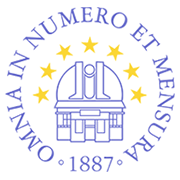An international team led by Dr. Marko Stalevski from the Astronomical Observatory in Belgrade has conducted an important observational project focused on studying active galaxies and the processes that shape their cores.
The project, titled “Uncovering the Origin of Outflows in the Circinus AGN,” aims to understand the origin and role of galactic winds - powerful streams of gas and dust that originate from the surroundings of supermassive black holes. These processes are key to modern astrophysics, as they influence not only the growth of black holes but also the evolution of their host galaxies.
Key Observation
On the night of September 29–30, Dr. Stalevski and his team observed the center of the Circinus Galaxy, located in the constellation of the same name in the southern sky. The research focused on gas and dust near the supermassive black hole at the galaxy’s core.
The observations were conducted in the radio domain, using the Very Long Baseline Interferometry (VLBI) technique, which combines signals from multiple radio antennas located thousands of kilometers apart. By merging data from these distant antennas, astronomers achieve an effective resolution equivalent to a single enormous telescope spanning the entire distance between the stations.

This time, the team used eleven antennas of the Australian network, including stations in New Zealand and South Africa, achieving a baseline longer than 10000 kilometers. The same technique, with a slightly longer baseline, was used by the Event Horizon Telescope in 2019 to produce the first-ever images of black holes in our galaxy and in Messier 87 (M87).
Alongside Dr. Stalevski as principal investigator, the project involves Sanja Lazarević from the Astronomical Observatory, currently a PhD student at the University of Western Sydney, Dr. Konrad Tristram from the European Southern Observatory (ESO) in Chile, and Dr. Cormac Reynolds from the CSIRO Space and Astronomy Division in Australia.
The Circinus Galaxy, which is the main focus of this study, was also central to the award-winning BOWIE project previously led by Dr. Stalevski - an initiative dedicated to understanding the phenomena occurring in the immediate vicinity of supermassive black holes.
Next Steps
The international research team now faces the demanding task of correlating massive data sets from the radio antennas to reconstruct the image. They also plan additional observations at another wavelength, which will help confirm the exact mechanism of the detected radio emission.
It is now well established that most galaxies harbor supermassive black holes at their centers - colossal objects millions to billions of times more massive than the Sun. These black holes grow by consuming surrounding gas and dust, releasing enormous amounts of energy across the electromagnetic spectrum: from X-rays and ultraviolet to optical and radio waves.
Such processes affect not only the black holes themselves but also entire galaxies, influencing their structure and the formation of new stars. The Circinus Galaxy stands as one of the most intriguing examples - a prototype for understanding galaxies with dusty outflows from their cores.
By unveiling the complex details of its nucleus, astronomers open the door to a deeper understanding of an entire class of similar active galaxies. Radio observations like these, involving the Astronomical Observatory of Belgrade, represent both a tremendous challenge and a significant step forward in solving this cosmic puzzle.




















































